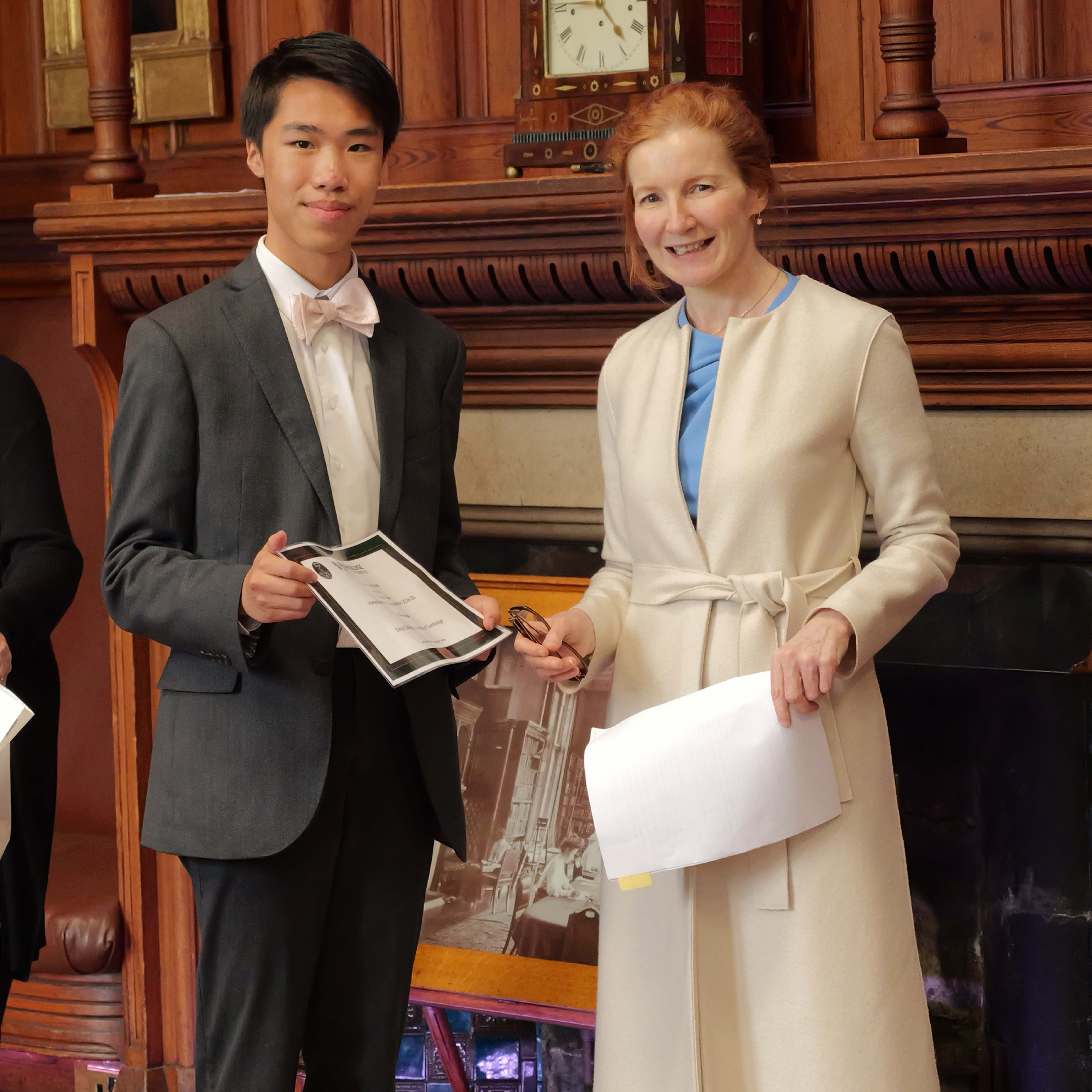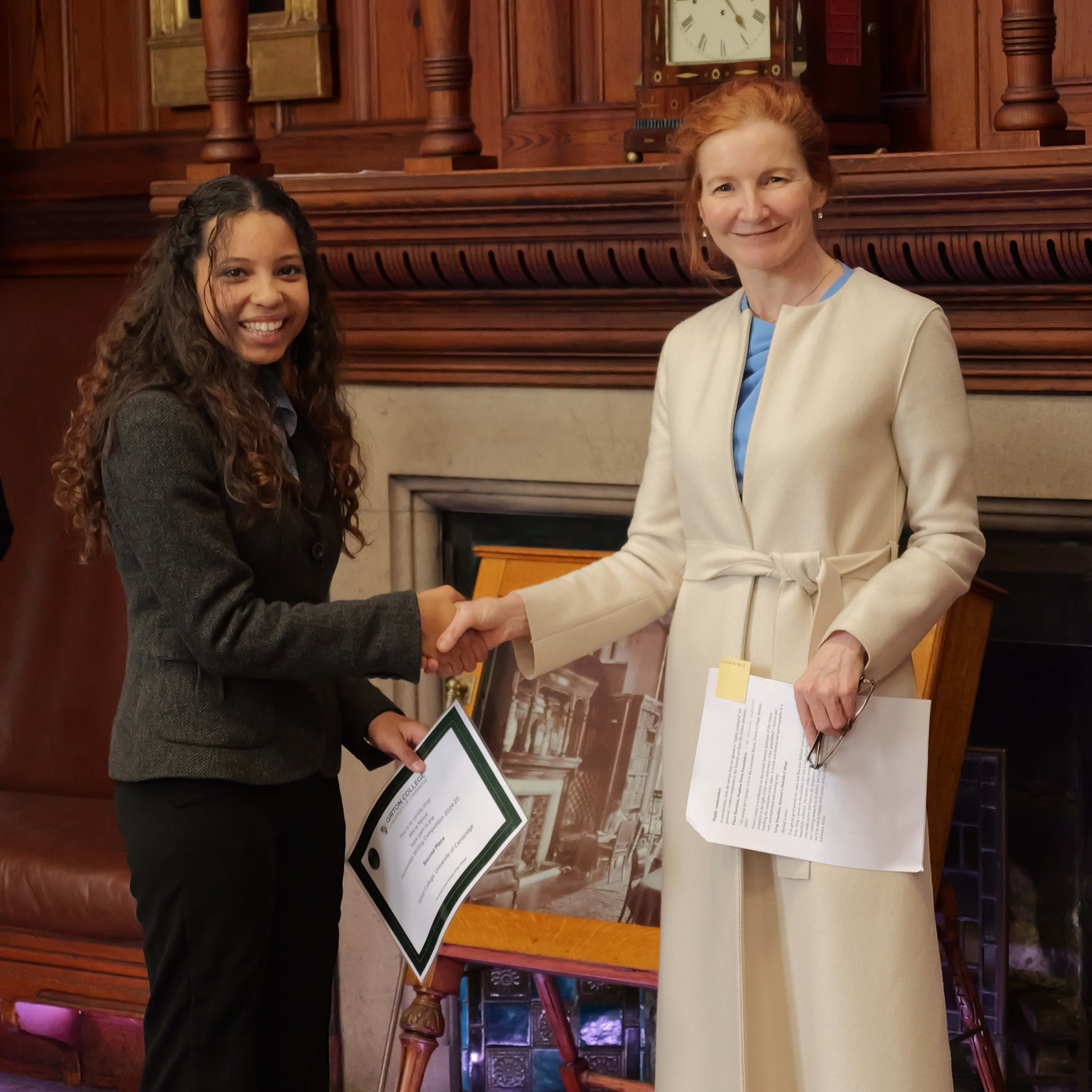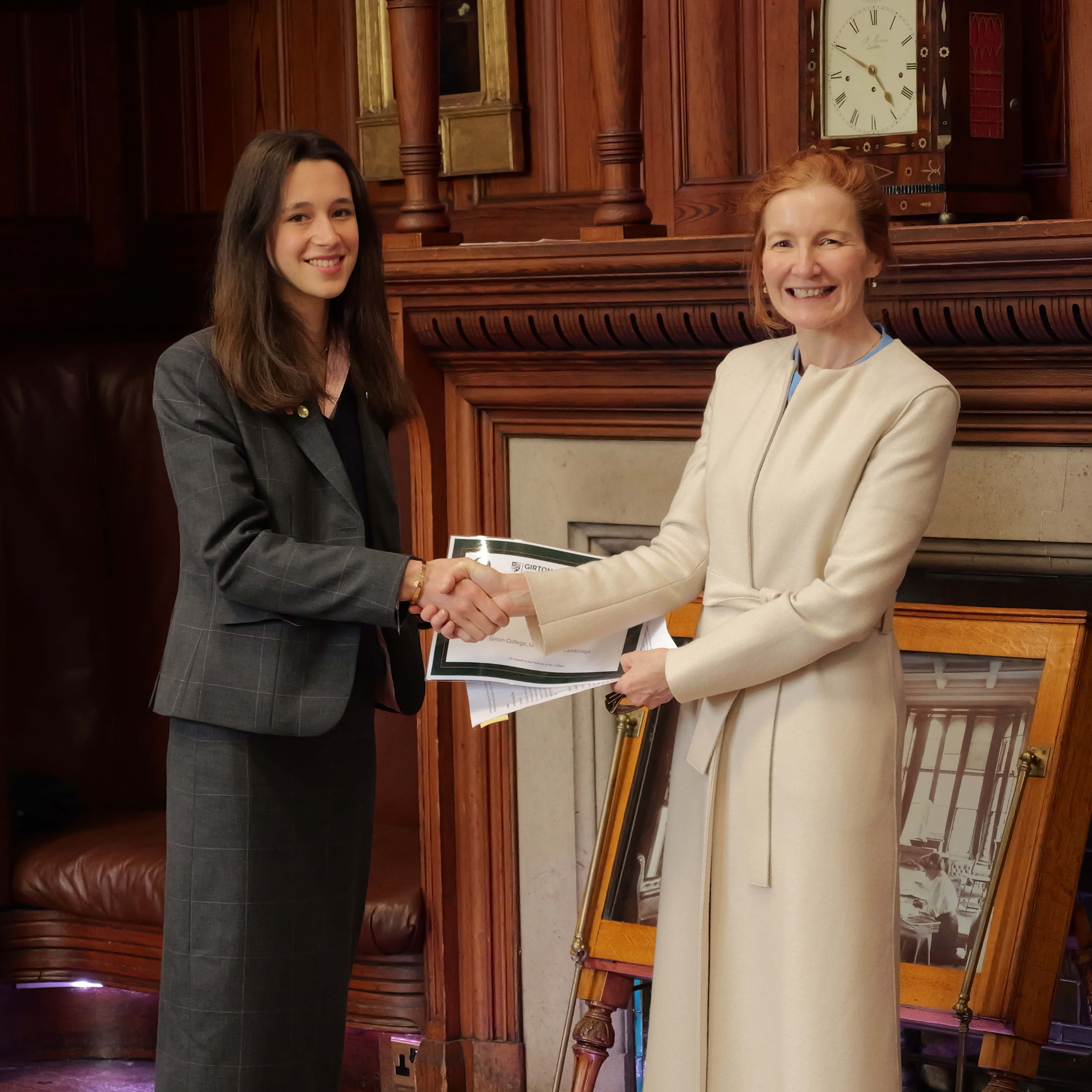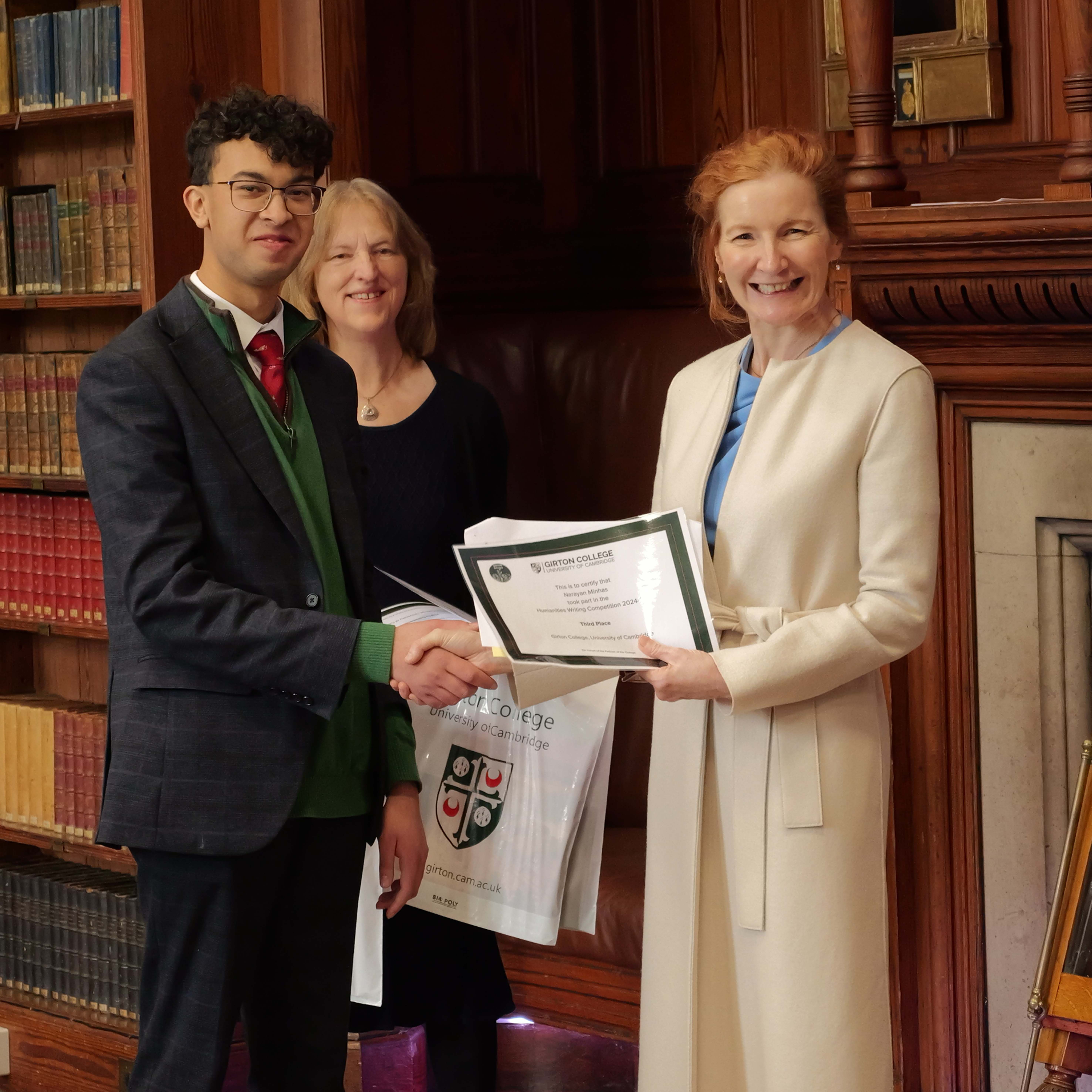The Humanities Writing Competition attracted a record number of submissions this year, with 165 Year 12 students from across the UK showcasing their creativity and research skills with essays, stories, and poems inspired by treasures from our Lawrence Room museum.
Focusing on Girton’s museum collection in the Lawrence Room, the Humanities Writing Competition aims to use ancient objects as a starting point for thinking across curricular divides – about the varieties of human experience that these survivals from the past can embody and reflect and the trains of thought they can set off. We are looking to encourage the ability to connect different areas of knowledge, to think about details and to communicate clearly.
The objects in the Lawrence Room that were chosen as starting points for this year’s competition were:
- two small amulets from ancient Egypt, part of the collection donated by Gwendolen Crewdson;
- a terracotta ‘Tanagra’ figurine from Boeotia, Greece, dating from the fourth century BC, depicting a woman holding a fan;
- a devotional statue of a Tudigong, a neighbourhood protecting god, from late nineteenth- or early twentieth century south-east China, donated last year by a retired Fellow of Girton, Professor David McMullen
- a cinerary urn from the Roman and early medieval cemetery here in Girton College, dating from the late fifth or sixth century CE.
The prize winners for this year were as follows:
First Prize
- Leroy Ho: ‘Exploring the differences in gender roles and relationship dynamics of Bes, Tudigong and their female counterparts’
 This brilliantly original essay ingeniously connected two artefacts from very different times and places to illustrate the contrasting place of gender in the worldviews of ancient Egyptian religion and Chinese Confucian philosophy.
This brilliantly original essay ingeniously connected two artefacts from very different times and places to illustrate the contrasting place of gender in the worldviews of ancient Egyptian religion and Chinese Confucian philosophy.
Second Prize
- Kiara Maria Njoya: ‘Ode on a Cinerary Urn’
 It’s very rare for a poem to make the roster of winners in this competition, so it is all the more of a pleasure to be able to wholeheartedly recommend Maria’s poem. It was a bold ambitious piece, which impressively connects historical and literary knowledge. It nods to Keats’s ‘Ode on a Grecian Urn’ in subject-matter and formal construction while using highly individual, dense, knotty metaphors and phrasing.
It’s very rare for a poem to make the roster of winners in this competition, so it is all the more of a pleasure to be able to wholeheartedly recommend Maria’s poem. It was a bold ambitious piece, which impressively connects historical and literary knowledge. It nods to Keats’s ‘Ode on a Grecian Urn’ in subject-matter and formal construction while using highly individual, dense, knotty metaphors and phrasing.
Joint Third Prize
- Laura Wilmouth: ‘The Tactile Power of the Small: An Analysis of Three Sacred Objects’.
 Laura’s essay, like Leroy’s, finds a common thread connecting the Egyptian amulets and the Tudigong figurine by focusing on the appeal of small intimate ritual objects compared to large imposing ones – the subversive power of the hidden and the intimacy of touch. She draws on a wide range of comparative examples from different religions and historical periods, showing impressive knowledge.
Laura’s essay, like Leroy’s, finds a common thread connecting the Egyptian amulets and the Tudigong figurine by focusing on the appeal of small intimate ritual objects compared to large imposing ones – the subversive power of the hidden and the intimacy of touch. She draws on a wide range of comparative examples from different religions and historical periods, showing impressive knowledge.
- Narayan Minhas: ‘Dual Tanagramania’
 Narayan’s essay shows a great ability to connect different areas of knowledge, counterpointing a study of the original purpose of Tanagra figurines with their rediscovery in Victorian times, with well chosen literary and artistic examples illustrating how and why they spoke to that moment in English and American history. Narayan even researched the Saumarez family, who acquired the Tanagra collection that was subsequently donated to Girton, and their neo-classical house, Shrubland Hall, where these artefacts would have been displayed.
Narayan’s essay shows a great ability to connect different areas of knowledge, counterpointing a study of the original purpose of Tanagra figurines with their rediscovery in Victorian times, with well chosen literary and artistic examples illustrating how and why they spoke to that moment in English and American history. Narayan even researched the Saumarez family, who acquired the Tanagra collection that was subsequently donated to Girton, and their neo-classical house, Shrubland Hall, where these artefacts would have been displayed.
Highly commended
- Flora Harrison
 On seeing the Cinerary Urn in the Lawrence Room, Girton College, January 2025’ Flora’s essay was a reflection on the mixed funerary practices of the Girton cemetery in the light of her own experience of her grandfather’s funeral and handling the container of his ashes. It melds scholarship and autobiography in a very accomplished and moving way.
On seeing the Cinerary Urn in the Lawrence Room, Girton College, January 2025’ Flora’s essay was a reflection on the mixed funerary practices of the Girton cemetery in the light of her own experience of her grandfather’s funeral and handling the container of his ashes. It melds scholarship and autobiography in a very accomplished and moving way.
- Greg Wardlaw: ‘Buried Voices’
Greg’s poem on the cinerary urn was a very close rival to Maria Njoya’s, beautifully achieved. Our poetry judge wrote: it conveys ‘a sense of somebody who reads poetry and knows the dynamics of line and stanza’, and: ‘This poem isn’t wearing research on its sleeve, but is an act of research in itself’.
Thanks to the generosity of the C. Anne Wilson Classics Fund and Cambridge University Press, we were able to substantially increase our prizes this year, and Lauren, as School Liaison and Outreach Officer, who publicised the competition tirelessly and innovatively, including on social media. As a result, the number of entries more than doubled.
Entries for the 2025-26 Competition will open in Autumn 2025: Humanities Writing Competition | Girton College
